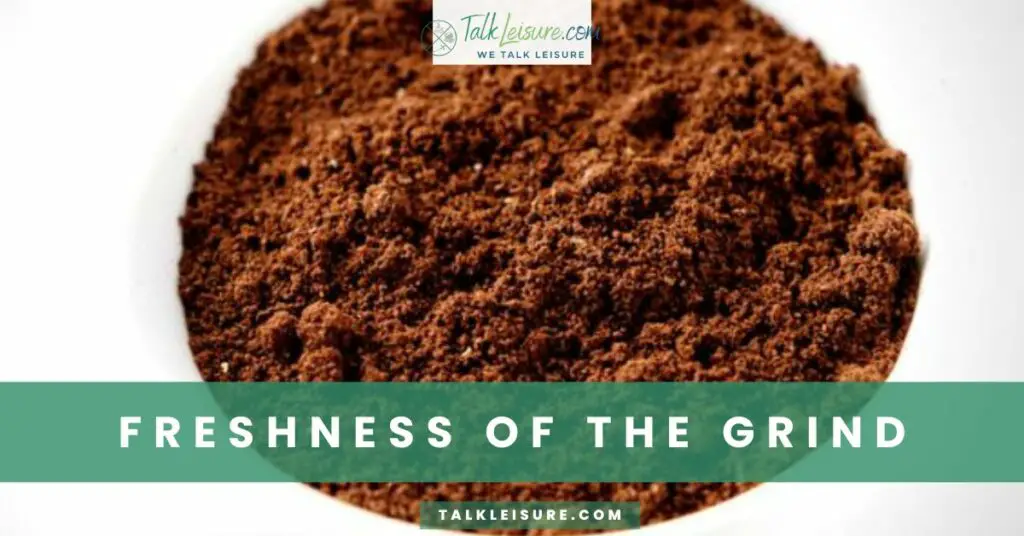In the world of coffee, the quest for the perfect brew is a journey marked by precision and passion.
The flavor of your coffee is a delicate dance orchestrated by numerous factors, each playing a crucial role in shaping the symphony that unfolds in your cup.
Let’s embark on a flavorful exploration as we dissect the eight fundamental elements that transform your coffee from a simple beverage to a sensory masterpiece.
The taste of your coffee is influenced by various factors that contribute to its flavor profile. Understanding and optimizing these elements can significantly enhance your coffee-drinking experience.
What factors affect the taste of brewed coffee beans?
1. Freshness of the Coffee Beans

The freshness of coffee beans marks the inception of our journey into the intricate world of coffee flavor.
We unravel the impact of using freshly roasted coffee beans, exploring how this fundamental step lays the foundation for a rich and aromatic brew.
The journey from roastery to cup is one of preserving essential oils and flavors that define the true essence of coffee.
Whether you opt for a drip coffee maker, a French press, or an espresso machine, the flavors extracted from recently roasted beans are vivid and robust.
Avoiding staleness is crucial, as aging coffee can lead to a loss of vigor and distinct characteristics, resulting in a flat and uninspiring taste.
To preserve the magic of freshness, store your coffee beans in an airtight container in a cool, dark place, steering clear of the refrigerator or freezer, where moisture can compromise their integrity.
8 Quick and Easy Iced Coffee Recipes for Summer
2. Freshness of the Grind

Moving beyond beans, we delve into the significance of the freshness of the grind.
Understanding why grinding coffee just before brewing is essential unveils a process that preserves delicate flavors and aromatic compounds.
We embark on a sensory exploration of the journey from whole beans to finely ground particles, discovering the alchemy that occurs in this transformation.
The act of grinding fresh coffee is akin to a customized brewing experience.
The freshness maximizes flavor extraction during brewing, ensuring that every aromatic compound and nuanced taste is at its peak.
This approach stands in stark contrast to pre-ground coffee, which often succumbs to bitterness due to prolonged exposure to the air.
Freshly ground beans offer a balanced and nuanced flavor profile, free from the undesirable bitter notes that can taint the coffee experience.
In essence, the freshness of the grind is more than a step in the coffee-making process; it’s a commitment to a ritual where each whir of the grinder is a promise of unparalleled aroma and flavor, making every cup a celebration of freshness and craftsmanship.
3. Coffee Grind Size
The size of coffee grounds is a silent influencer in the world of coffee flavor.
In this section, we uncover the intricacies of coffee grind size and its profound impact on extraction and taste.
From espresso-fine to French press-coarse, each grind size brings forth a unique set of flavors, contributing to the diverse spectrum of coffee experiences.
In essence, understanding the dynamics of coffee grind size is akin to mastering the art of dance.
It’s a nuanced skill that, when perfected, ensures that every particle contributes harmoniously to the flavorful performance in your cup.
Whether it’s the lively steps of a fine grind or the measured strides of a coarse grind, the size of your grind is the choreographer that shapes the taste and experience of your coffee.
4. Gram Throw
Precision is the maestro’s wand in the barista’s orchestra, and gram throw is the key to consistency.
Here, we explore the importance of accurate coffee measurement and how it ensures a harmonious and reproducible taste in every cup.
The art of brewing transcends intuition, relying on the precise balance achieved through meticulous measurement.
5. Water Quality

The purity of water is the canvas upon which the coffee masterpiece is painted.
In this segment, we discuss the role of water quality in brewing.
From the hardness of water to its mineral content, every facet contributes to the extraction process and, consequently, the flavor profile of your coffee.
Explore how the right water composition can elevate your brew to new heights.
In essence, water quality is the silent conductor orchestrating the symphony of flavors in your coffee.
It sets the stage, influences the dance of extraction, and ensures that each note is pure and resonant.
Paying attention to the often-overlooked element of water quality is a commitment to the pursuit of coffee excellence, where every sip becomes a testament to the harmonious marriage of quality beans and pristine water.
6. Pressure in the Coffee Machine
For lovers of espresso, the pressure applied during brewing is a critical factor.
This section delves into the world of brewing pressure and its impact on the extraction process.
From the mechanics of espresso machines to the nuances of pressure application, we unravel the secrets behind creating a balanced and flavorful shot.
7. Soft or Not Tamping
The tamping process is an art form in itself.
Here, we shine a spotlight on the subtleties of tamping – the gentle or firm pressure applied to the coffee grounds.
Understand how this seemingly small step can influence water flow and flavor extraction, unveiling the importance of a well-executed tamp in the pursuit of the perfect cup.
8. Cleanliness of Your Coffee Machine
Our journey concludes with a reflection on the significance of cleanliness in the brewing process.
Regular maintenance is not just a ritual but a necessity to prevent flavor contamination.
Delve into the world of immaculate brewing equipment and how it ensures the purity of flavors, allowing each cup to shine with untainted brilliance.
Conclusion
As we wrap up our exploration into the anatomy of coffee flavor, it becomes evident that the alchemy happening in your mug is a symphony of precision, freshness, and balance.
Each of the eight factors we’ve dissected plays a vital role in transforming your coffee into a sensory masterpiece.
Next time you savor that aromatic cup, armed with the knowledge of these elements, take a moment to appreciate the craftsmanship involved.
Coffee is more than a beverage; it’s a journey through nuanced flavors, an exploration of precision, and a celebration of the harmonious interplay of factors that make each cup unique.
Frequently Asked Questions
How does water quality impact the flavor of coffee?
Water quality significantly affects the extraction process, influencing the overall taste of your coffee. Factors such as hardness and mineral content play a crucial role in shaping the flavor profile.
Why is cleanliness of the coffee machine important?
Regular cleaning prevents residual oils and flavors from contaminating your coffee, ensuring a pure and untainted taste. Cleanliness is paramount in maintaining the integrity of the brewing process.
Does the pressure in a coffee machine affect taste?
Yes, especially for espresso enthusiasts. The pressure applied during brewing directly impacts the extraction process, influencing the balance of flavors in the final shot.
Can the size of coffee grounds affect the taste of the brew?
Absolutely. Different grind sizes extract different flavors from the beans. It’s a crucial factor in achieving the desired taste and aroma in your coffee.
Best Wishes!












